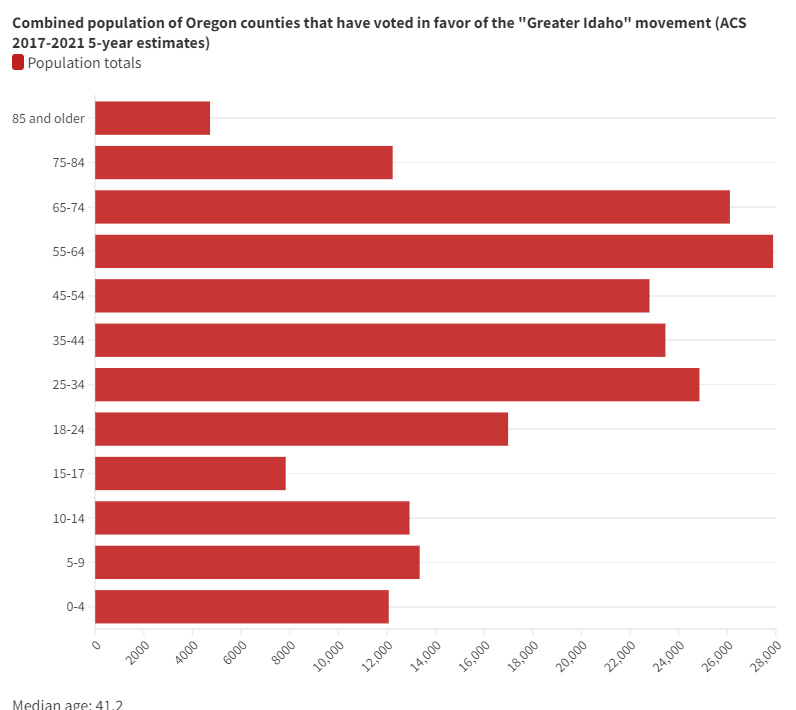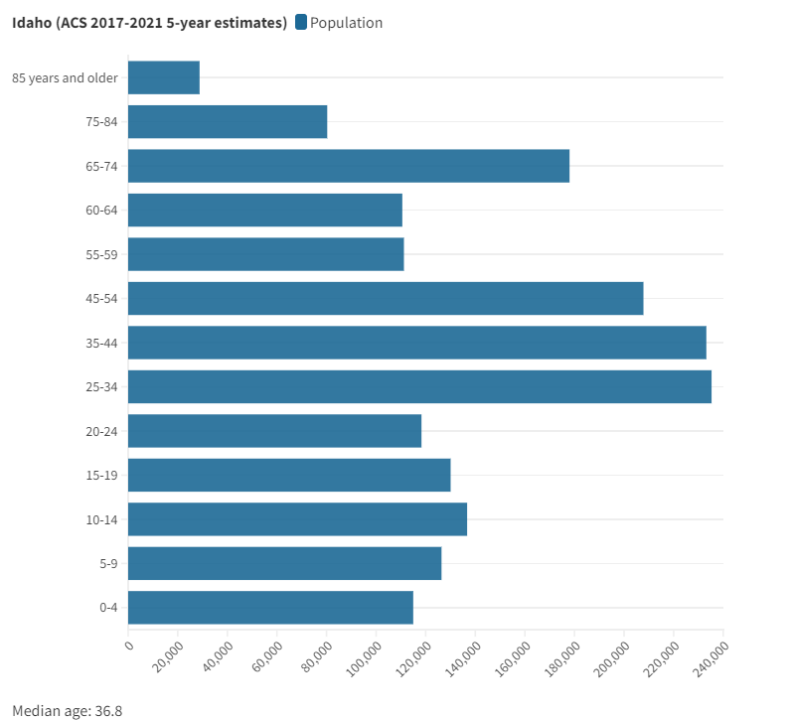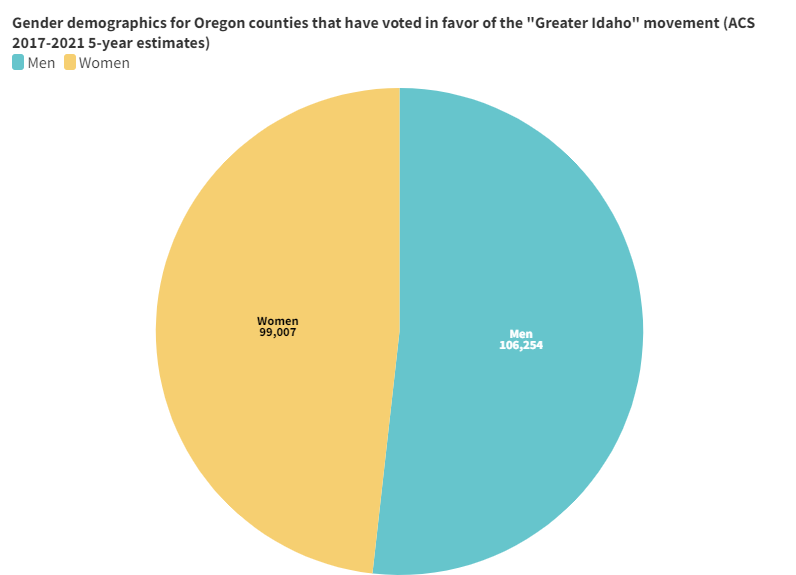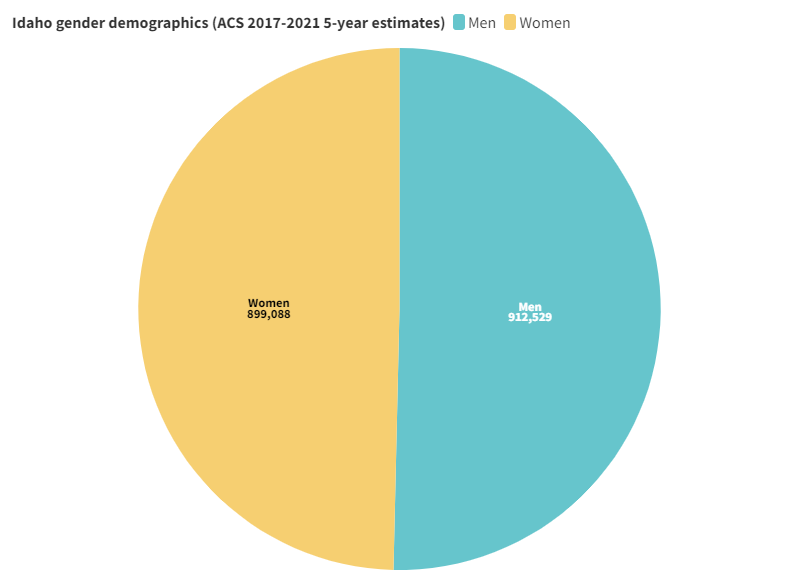PORTLAND, Ore. (KOIN) — The “Greater Idaho” movement, which seeks to extend Idaho’s Western border by swallowing up roughly half the state of Oregon, would also exacerbate Idaho’s aging population, data shows.
According to the U.S. Census Bureau’s five-year population estimates from 2017 to 2021, Eastern Oregon is older than Idaho. The median age of Oregonians in the 11 counties that have voted to support the “Greater Idaho” proposal (Baker, Grant, Harney, Jefferson, Klamath, Lake, Malheur, Morrow, Sherman, Union and Wheeler Counties) is 41.2. Idaho also has an aging population, with a median age of 36.8.
Experts like Huda Alkitkat, the manager for Portland State University’s Population Estimates Program, say that aging populations like Eastern Oregon are likely to need more government assistance as their citizens reach retirement age.
“The population aged 65 [and older] represents almost 20% of the total population in those 11 counties,” Alkitkat said. “Those people will need state assistance programs, including, for example, skilled nursing care, social care and transportation.”
Financial experts often associate older populations with dying economies. That’s because a larger number of elderly citizens in a population, a report published by the International Monetary Fund explains, historically requires more elder care, but produces fewer workers.
“An aging population and slower labor force growth affect economies in many ways,” the International Monetary Fund report states. “The growth of GDP slows, working-age people pay more to support the elderly, and public budgets strain under the burden of the higher total cost of health and retirement programs for old people.”
While the “Greater Idaho” movement is founded on the idea that Oregon’s rural, conservative voters would feel more represented under the rule of the Republican-led state of Idaho, Oregon State University Associate Professor of public policy Christopher Stout told KOIN 6 News that the exchange could also pose interesting consequences for the working-age citizens in Oregon’s affected counties.
“Publicly funded jobs typically pay less in Idaho than in Oregon,” Stout said. “A lot of younger people who move would take a pay cut.”
State troopers in Oregon, for example, earn a starting pay rate of more than $66,000. In Idaho, the starting annual salary for new recruits is less than $50,000.
It’s also unclear how “Greater Idaho” would affect Eastern Oregon’s less-represented demographics like children and women.
Citizens younger than 18 years old make up about 21% of the citizens in the 11 Eastern Oregon counties that favor “Greater Idaho.” Women, meanwhile, make up roughly 48.2% of the citizens in these counties. Women are also the minority in Idaho, making up roughly 49.6% of the gem state’s population.
Stout said that the proposed movement reminds him of “Brexit”: The United Kingdom’s 2020 decision to leave the European Union. Many young people in the U.K., he said, opposed the “Brexit” decision, but felt helpless as they were outvoted by the older, ruling generation.
“A lot of young people voted against it and the older people were supporters,” Stout said. “Younger people said: ‘Were going to have to live with this for generations in the way that older people won’t.’” There was a lot of frustration. I wonder if you would see a similar age divide.”
While the “Greater Idaho” movement has gained popularity among Eastern Oregonians and Idaho lawmakers, who passed a bill in February agreeing to engage in “Greater Idaho” talks with the state of Oregon, it remains unclear how the proposed deal would actually occur.



